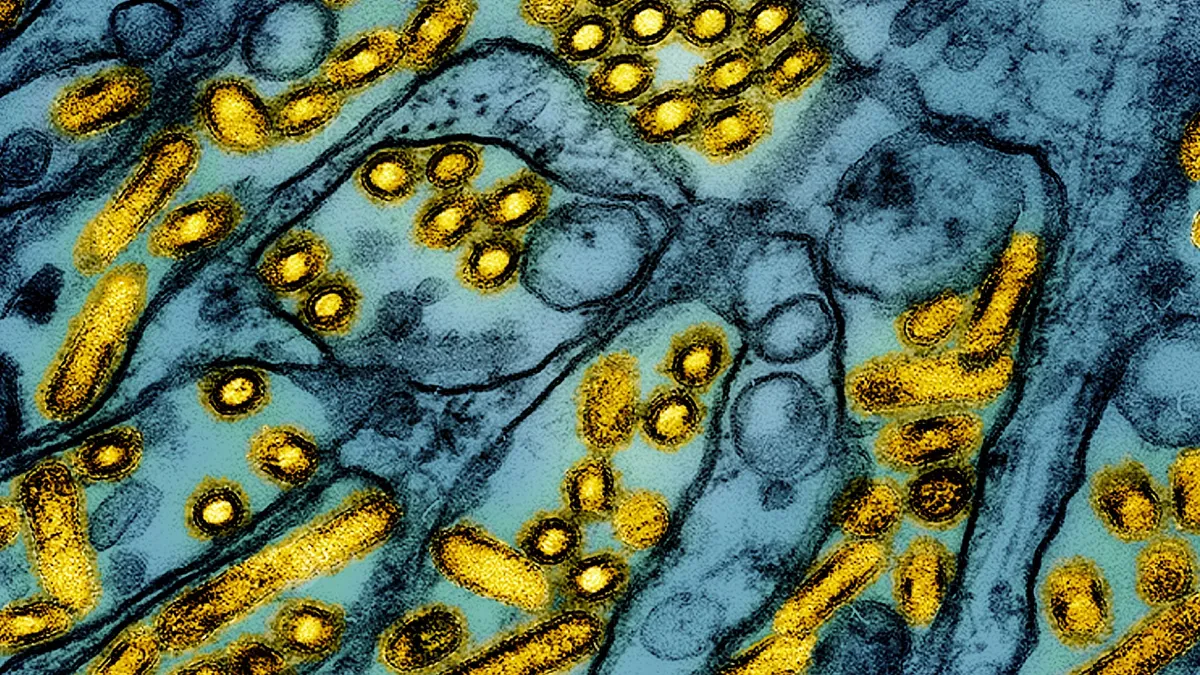
Experts are raising alarms about the potential for a bird flu pandemic, specifically due to the H5N1 strain that has already made the leap from birds to mammals, such as cows. This alarming development has created a pathway for the virus to infect farm workers, heightening fears of a widespread outbreak. Scientists are particularly concerned about the possibility of the virus mutating further, which could enable it to spread among humans—an ability it currently lacks.
Most human cases of the H5N1 virus have been relatively mild, manifesting symptoms like conjunctivitis, fatigue, and a sore throat. However, experts warn that should the virus continue to evolve, it could lead to severe illness. In a concerning development, the United States reported its first human death from H5N1 this year—a Louisiana man in his mid-60s. Genetic analysis indicated that the virus may have mutated within the individual, potentially increasing its severity.
A letter published in the journal Science highlights the urgent need for action to prevent a potential outbreak. Dr. Jesse Goodman, a lead author from Georgetown University Medical Center, emphasized the importance of addressing gaps in pandemic preparedness. "H5N1’s potential to spread means urgent action is needed," he stated. Enhancing readiness now could save lives and mitigate societal and economic disruption if H5N1—or another outbreak—were to escalate into a pandemic.
Growing concerns among Czech scientists suggest that the highly pathogenic H5N1 virus could be spreading through the air. Previously, it was believed that the virus could only be contracted through close, prolonged contact with infected birds or their droppings. This new perspective calls for intensified surveillance and research into the virus's transmission pathways.
The development of a vaccine for H5N1 has been slow, primarily relying on protein-based vaccines that require months to produce. Experts propose that using an mRNA vaccine, similar to those developed for Covid-19, could expedite the process. However, this can only happen if governments and regulatory bodies act swiftly. The authors of the letter also underscored the necessity for global cooperation to ensure that vaccines and treatments are accessible to all countries, not just affluent nations.
“To ensure equitable access, a global access framework should be established, including an entity that can provide financing and advanced vaccine purchases for low- and middle-income countries,” the authors stated. They also called for comprehensive testing of pandemic response plans to facilitate international collaboration in sharing strategies and playbooks for various disease scenarios and immunization methods.
Last year, the World Health Organization (WHO) designated bird flu as one of its 37 priority pathogens with pandemic potential. In recent measures, the British government announced it had secured five million doses of an H5 protein-based vaccine to prepare for the possibility that the virus could begin to transmit between humans, a scenario that could trigger a pandemic.
Meanwhile, a new, non-peer-reviewed study from the State Veterinary Institute in Prague suggests that the avian flu virus could be transmitted through the wind. This study analyzed a February 2024 H5N1 outbreak at poultry farms located eight kilometers apart in the Czech Republic. Remarkably, testing revealed that some virus strains from a duck farm were 100% identical to those found at a nearby chicken farm, despite no direct links between the two locations.
With no contaminated food or water sources and no large bodies of water nearby that could facilitate the virus's spread via wild birds, scientists concluded that wind transmission appears to be the most plausible explanation for the outbreak. This underscores the need for ongoing research and vigilant monitoring as we confront the evolving challenges posed by the H5N1 virus.